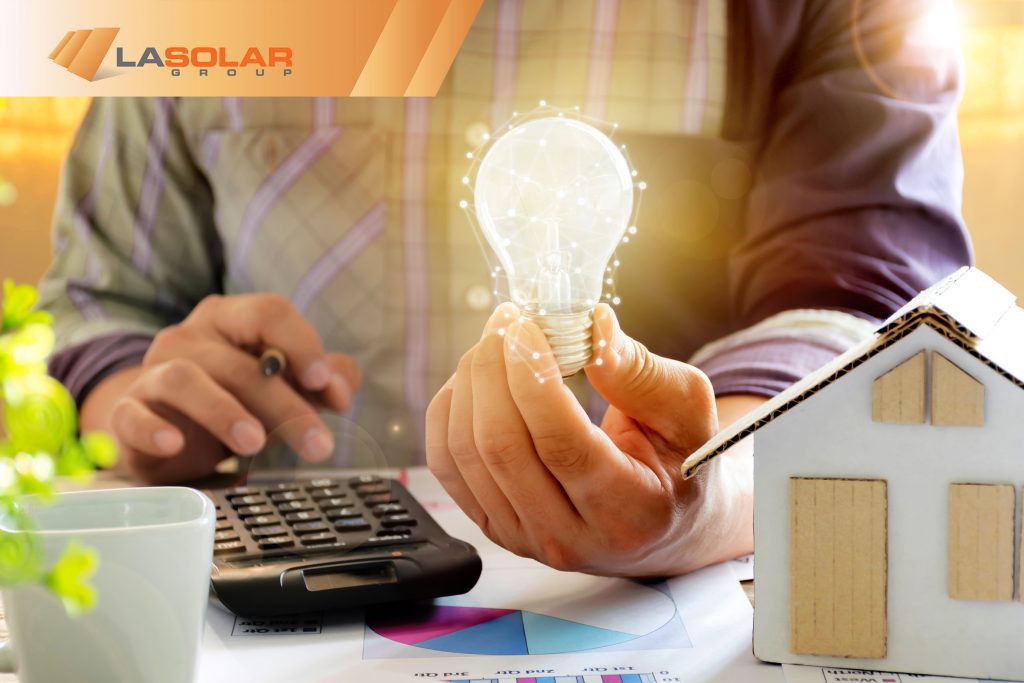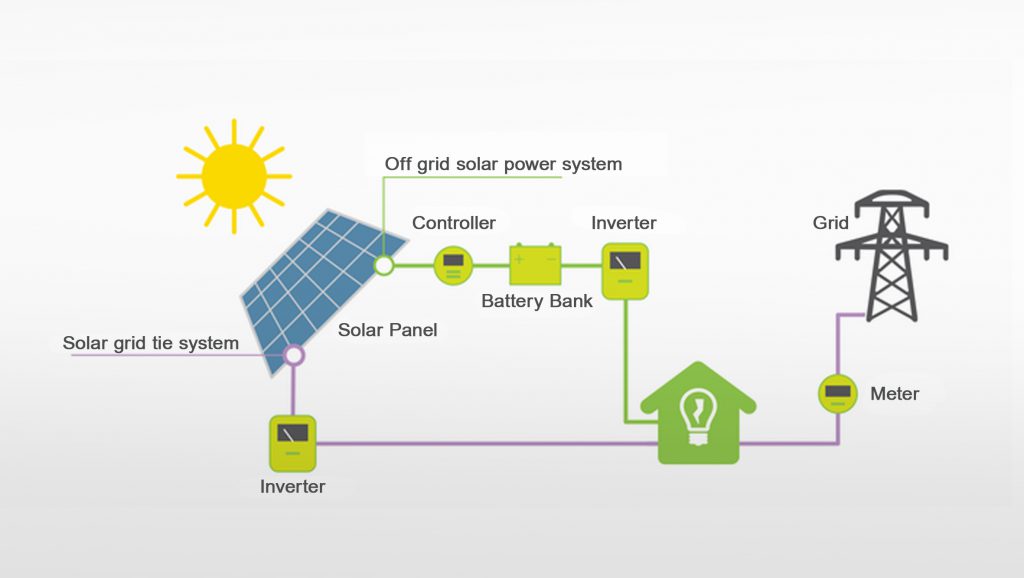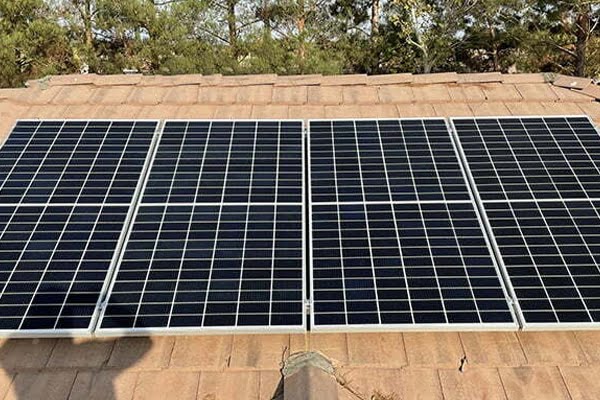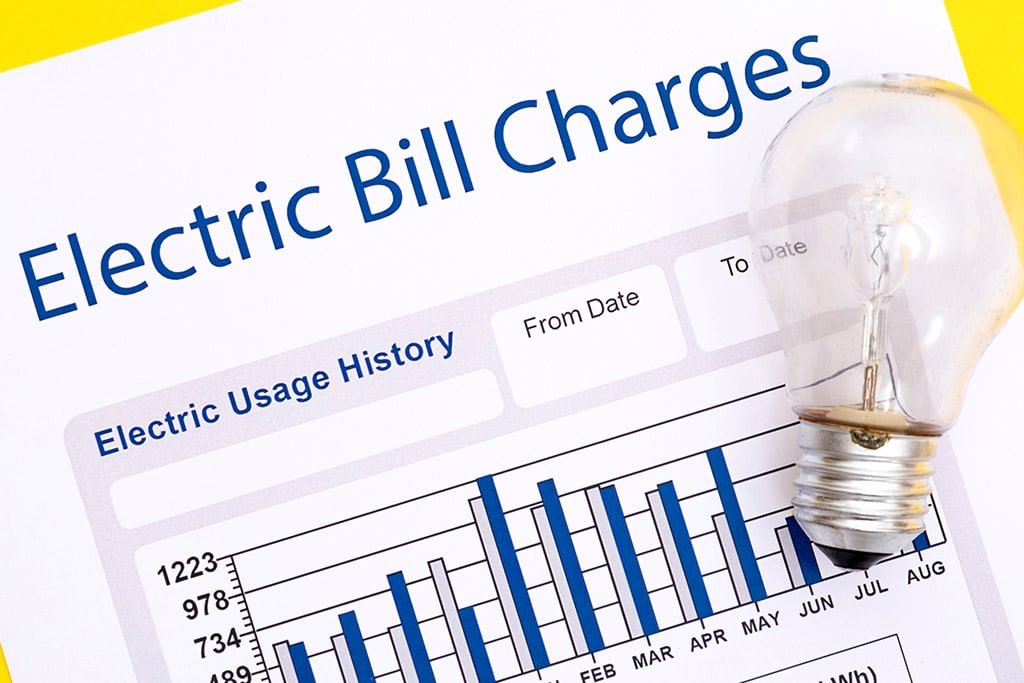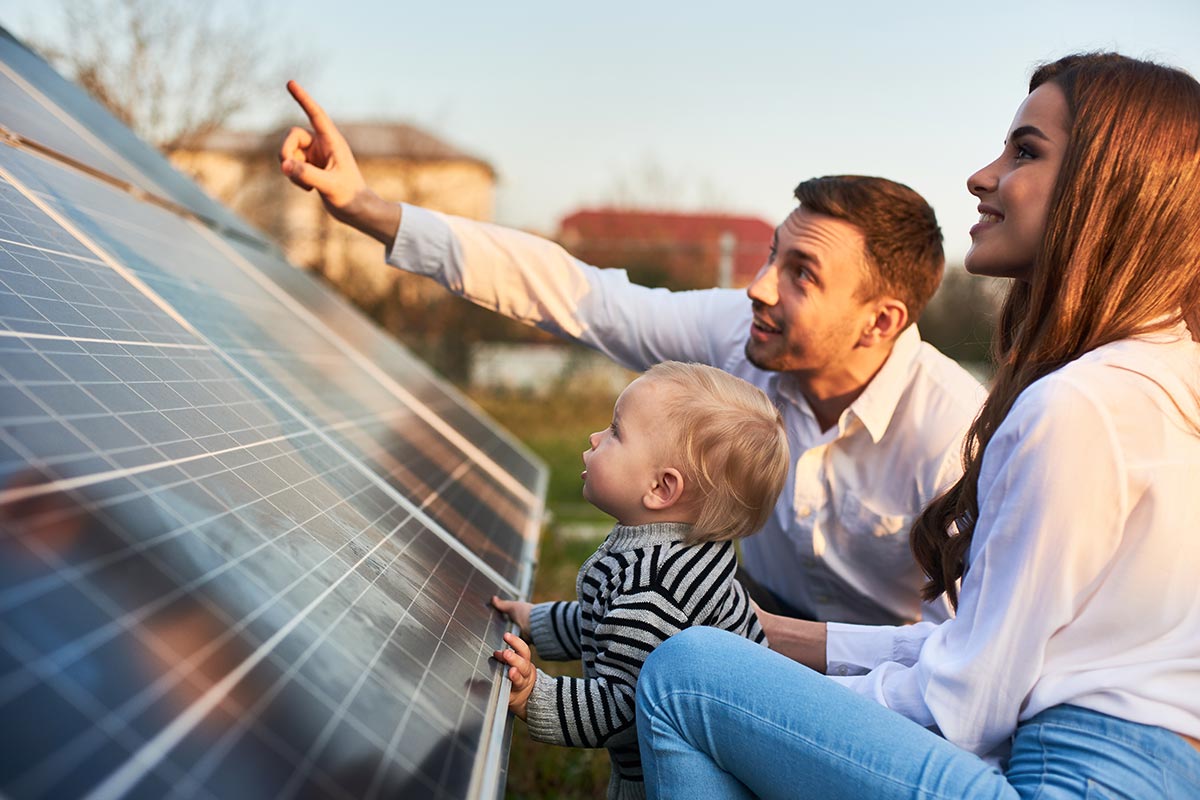If you have decided to go solar this article is for you. It is a solar power system design course for a beginner who is interested in solar system design and installation, solar water system design and topics alike.
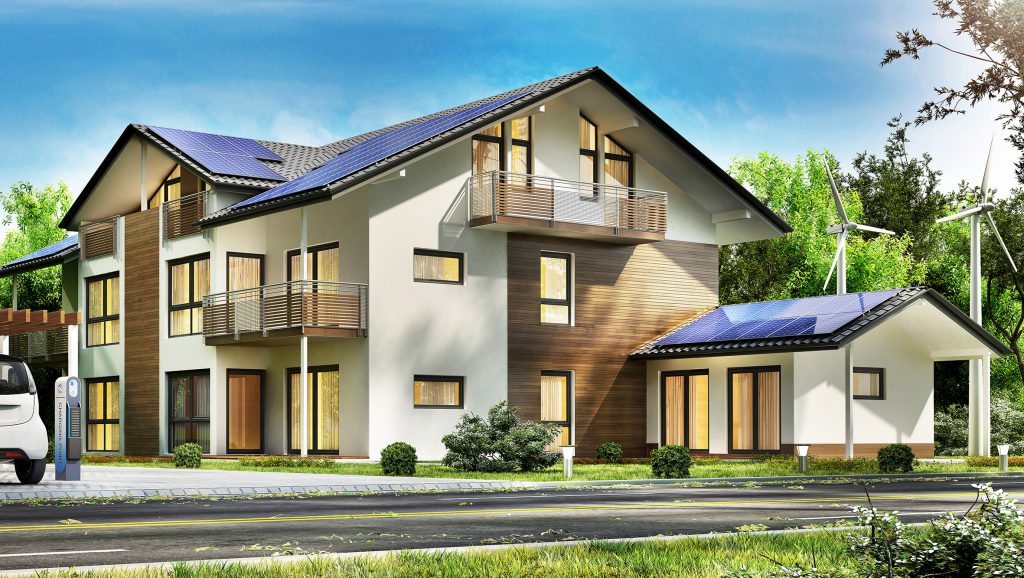
First you need a solar power system design calculation, that will provide you an approximate information about pros and cons of this change on your budget. The initial cost of solar power installation is rather high, and the system efficiency basically depends on weather conditions, so make sure that you really need this new home solar system design.
Solar System Design Calculation
In order to make sure that solar panel installation is a right choice, you should know in advance that it will be beneficial for your budget and not cause you more expenses than before. An approximate calculation will be provided by any local solar system installation company of your choice. However, you can do this calculation by yourself as well. For this purpose, you will first need to figure out how much power you need for your daily consumption (AC and DC loads).
To make a load analysis you must make a careful list of all your loads, distinguish the time needed for these loads, as well as wattage rating for each load. And remember that each Watt hour counts! This calculation is mostly important because you can’t make a solar system design for a home based on square meter. For instance, small cabin loads may include a fridge, microwave oven, TV set, air conditioner, water heater, fan, well pump, meanwhile a big house can only have a laptop and a TV set.
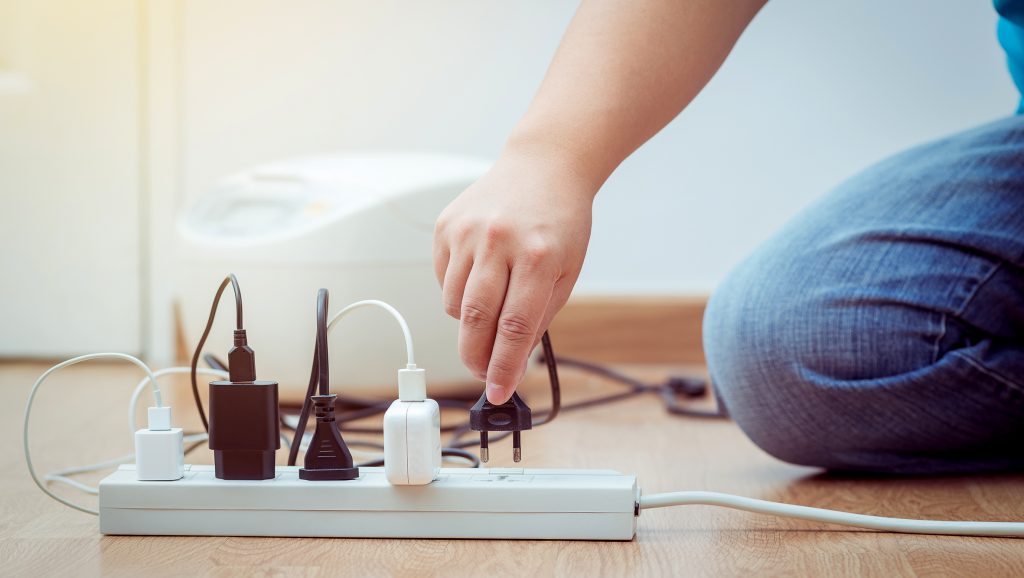
Each of the equipment in your house has a power label on it, where you can find all you need for calculation. You can also make calculations with a Kill-a–watt meter to measure your daily power consumption.
Basic Solar System Design
How to design a solar power system for home? This is one of the main issues for you, once you decide on going solar. Solar panel system design can be of two types – solar grid tie system design and off grid solar power system design. A solar pv off grid system design is totally independent of any local grid. A grid tie solar system design is connected to the nearest grid in the area where you live. Once you distinguish your type of connection you need to go ahead with main solar home system design.
To be short and more precise a photovoltaic system is basically described as a combination of components that enables people to harness the power of the Sun for daily consumption. A pv system includes all components required to convert energy from the Sun and use it in regular appliances. The two main components required are a pv module (solar panel) or several and an inverter. The function of a pv module is to consume sunlight and generate energy (DC). The inverter converts this energy into AC that is required for everyday household loads.
Based on the topology of the system a battery may also be necessary. If your system is off grid you will need it. A battery is a power storage equipment used for extra power. What does it mean? Imagine that in an ordinary day your pv system generates energy that is enough for your house loads. But on bright and sunny days the same solar panels generate extra power that you will not manage to use. In this case the excess power is stored in the battery. This stored power may be very useful at night, when there is no sunshine and the pv modules are unable to generate power. You can also donate this extra energy to your local electricity grid and receive money for it.
The grid connected photovoltaic system is basically common in countries supporting solar policy, when extra power generated by the consumer’s solar system can be sent back to the electricity grid. In a grid connected system the main components of the solar system are photovoltaic array, grid connected inverter and distribution panel.
Photovoltaic array plays the main role and is responsible for solar power generation. A grid connected inverter is a necessary device that converts DC into AC for household loads. Distribution panel is required to transfer the extra power generated by the pv modules to the main grid. When the consumer supplies the excess power to the electricity grid, he is being paid for it. This policy has been designed specially to encourage people to switch to solar system maintenance with mutual benefit for both sides.
Excluding the initial cost for solar system installation there is almost no further payment at all. You only need to have the solar panels’ surface cleaned once or twice a year. Highly qualified specialists will provide good service for an insignificant fee. It is worth mentioning that many manufacturing companies provide 20-25 years’ warranty for their photovoltaic modules and if you keep correct maintenance instructions, they will serve you a great deal.
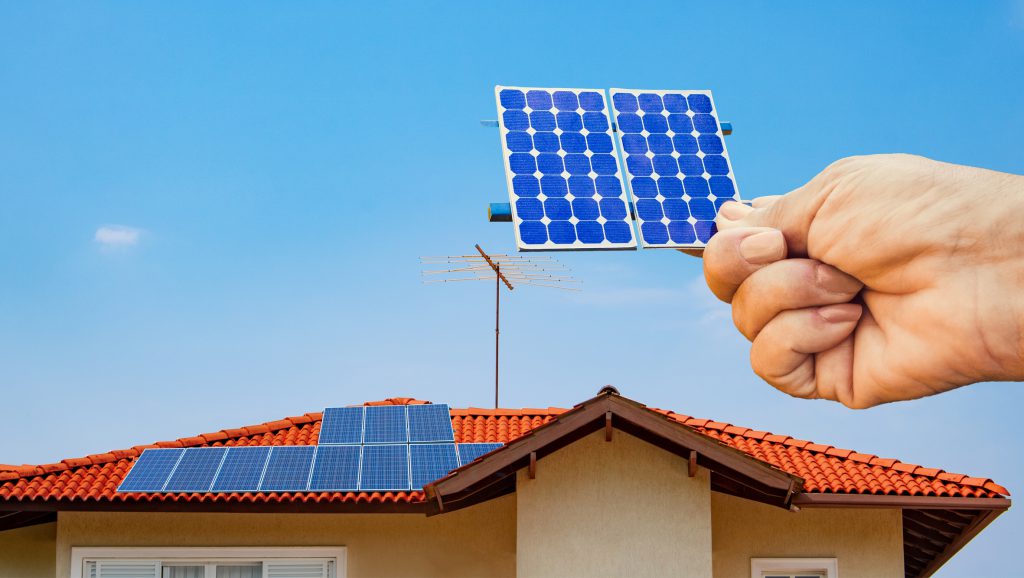
When planning your home solar power system design the position of the solar panels is the most important issue. The pv modules must be installed with maximum sunlight access. If your roof surface doesn’t have enough space to locate all the pv modules required for your loads, you can also consider a ground mounted photovoltaic system as well. Very frequently solar panels are installed on nearby grounds where there is no obstacle for them to generate solar power from the sunlight.
The location of the inverter is important as well. If you have decided to design your own solar power system, make sure that the inverter is installed in a dry place out of sunlight with permanent ventilation.
Solar Domestic Hot Water System Design
To identify the most practical solar water heating system design for your house several issues should be distinguished. A residential solar water system design can be both passive and active.
The passive system design is easy to maintain and is space saving. In case of a closed coupled system the tank can be situated on the roof close to the collector. In case of a gravity feed system the tank is usually set within the roof cavity. In both cases the roof structure must be strong enough to handle up to 800 kilograms of weight.
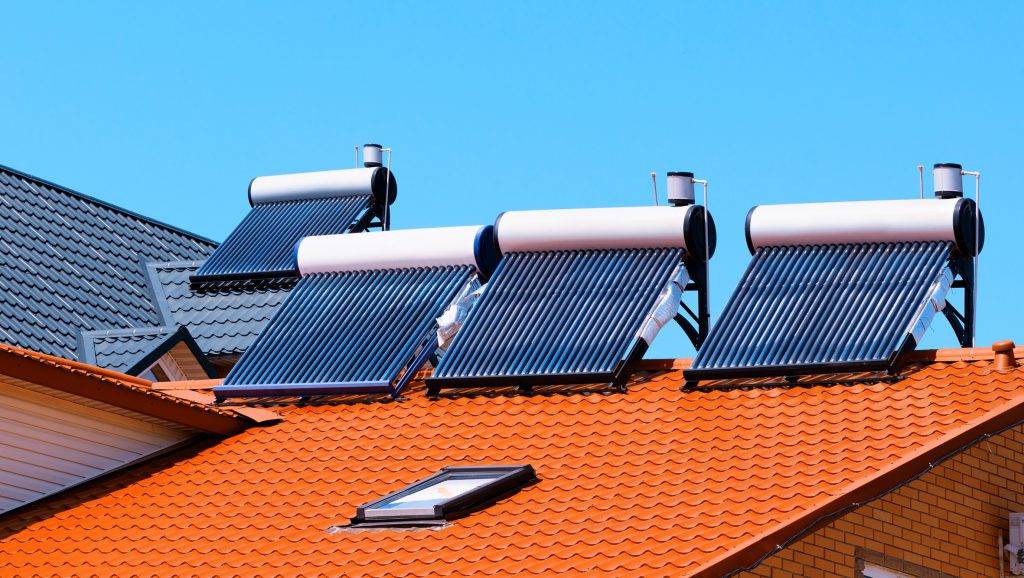
In case of solar water pump system design (or active system) a tank and a pump are used. This system is more unobtrusive. The location of the tank is flexible. It can be both on top of the roof or on the ground. Also, you can use an existing tank. The pump is required to move the water between the collectors and the tank.
There are two types of collectors; flat plate and evacuated tubes. Evacuated tubes can absorb sunlight in the greater part of the day and are good for winter performances. Flat plate collectors are, on the other hand, more affordable than evacuated tubes. With ideal angle inclination suitable for a specific area both collectors will provide good performance.


